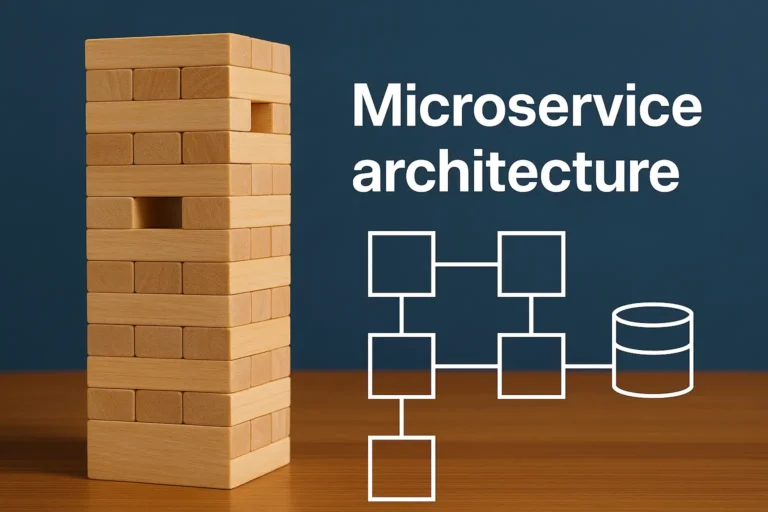
In the fast-moving world of software development, staying flexible and scalable is no longer optional. It’s essential. One concept that helps achieve this is microservice architecture. While the term may sound technical, understanding it can be pretty straightforward. To help make sense of it, let’s compare it to something we’re all familiar with: a game of Jenga.
What Is Microservice Architecture?
Microservice architecture is a method for structuring a software system that enables developers to focus on specific functions independently. Instead of building a single extensive application where all parts are tightly connected, microservices break the system down into smaller, independent components. Each part—or microservice—focuses on a specific function. These services communicate with each other but operate independently.
Now, think of your software system like a Jenga tower. In a traditional setup, known as a monolithic architecture, all blocks are tightly stacked together. If you pull one out or try to replace it, the whole tower can collapse. It’s hard to change, update, or scale.
In a microservices architecture, each block represents a service that operates independently. If one fails or needs updating, the rest of the system can continue to function. You replace that block without touching the others. That’s the power of microservices.
Why Microservices Matter
Microservices offer numerous advantages in modern software development. They help make systems more:
- Scalable: You can scale just one part of your system based on demand.
- Flexible: Teams can work on multiple services simultaneously.
- Resilient: If one service fails, the others continue to function
- Faster to deploy: Small changes can be deployed live without affecting the entire application.
This approach is beneficial for companies that anticipate growth or change over time. At Pegotec, we often recommend a microservice architecture to clients who want to future-proof their software systems.
How Pegotec Uses Microservice Architecture
At Pegotec, we utilize microservice architecture to develop software that operates more efficiently and adapts more effectively. When we start a project, we talk with the client to understand their business, goals, and users. Based on that, we create a plan where each service has a clear job.
For example, in an e-commerce platform, we might create separate services for:
- User management
- Product listings
- Orders
- Payments
- Notifications
Each one can be updated, scaled, or fixed without disturbing the rest. If your payment service needs an upgrade, there’s no need to bring down the entire shop in a microservice architecture setup.
We also design services to be API-ready. This means your software can easily connect with other systems, apps, or even AI tools later on. Whether it’s a chatbot, a mobile app, or third-party analytics, microservices make integration simple.
Our developers at Pegotec work in Agile sprints, building and testing services quickly. We utilize container technology, such as Docker, and orchestration tools like Kubernetes. This gives us strong control over how services are deployed and how they perform.
Keeping the System Stable—Just Like Jenga
Just as Jenga players must keep the tower balanced, software teams must manage their systems effectively. Services must communicate clearly, usually through lightweight messaging or APIs. We monitor every part of the system and track performance to ensure the microservice architecture stays effective.
At Pegotec, we use tools that allow real-time monitoring. If something breaks or slows down, we see it instantly. That will enable us to act quickly, resolve issues, and prevent outages.
We also back up our work with automated testing. Every change is tested before it reaches users. That keeps the entire system stable and ensures your business runs smoothly.
When to Choose Microservices
Microservices work best when your business expects:
- Frequent changes and updates
- High user traffic in specific parts of the system
- Future integrations with other tools or platforms
- Teams are working on different features at the same time
If that sounds like your situation, Pegotec can help you move from a monolithic system to a modern microservice setup. We guide you step by step, ensuring you get all the benefits without the stress.
Final Thoughts
Microservice architecture doesn’t have to be confusing. Think of it like a game of Jenga. Each block is a service in the architecture. When they’re well-designed and placed with care, you get a tower that’s potent, stable, and flexible.
At Pegotec, we employ this approach to develop software systems that scale with your business. We help you plan, make, and run microservices that are fast, secure, and future-ready
So next time you think about building or updating your system, remember: it’s not about building a big block. It’s about creating the right blocks, one at a time—and stacking them smartly. Contact us today and discuss Microservice Architecture Explained Simply.